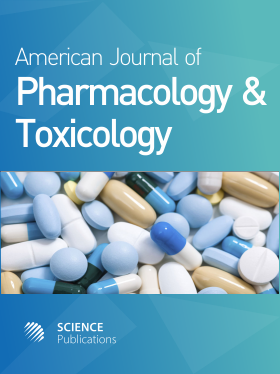Anti-Diabetic Activity of a Fraction from Cissus verticillata and Tyramine, its Main Bioactive Constituent, in Alloxan-Induced Diabetic Rats
- 1 Federal University of Ceará, Brazil
- 2 Federal University of Piauí, Brazil
Abstract
Cissus verticillata (syn. C. sycioides, fam. Vitaceae) is a medicinal plant popularly used in Brazil, for the treatment of diabetes mellitus. The anti-diabetic activity of a fraction from leaves of Cissus verticilllata (MSF, methanol soluble fraction), as well as that of tyramine (TYR) were investigated, in the model of alloxan-induced diabetes, in male Wistar rats. The biochemical parameters studied were: serum glucose, triglycerides (TG), total cholesterol (TC) and very low density lipoprotein (VLDL), urea, creatinine, AST and ALT levels. Besides, glycated hemoglobin and liver glycogen concentrations were also determined. The MSF (50 and 100 mg kg-1, p.o.), tyramine (1 and 2 mg kg-1, p.o.), glibenclamide (GLI 5 mg kg-1, p.o.) and metformin (MET, 50 mg kg-1, p.o.) were administered daily, for 5 days, 48 h after the alloxan injection (40 mg kg-1, i.v.). Drugs were administered alone or associated. Alloxan-diabetic rats showed significant reductions in plasma glucose, triglycerides and total cholesterol, after the treatment with the MSF, tyramine and glibenclamide, as compared to diabetic controls. The MSF and TYR effects were not potentiated by their association with GLI. Besides, MSF or TYR did not reverse DZ-induced hyperglycemia. However, MSF and TYR effects were significantly potentiated by MET, suggesting that these drugs act by a mechanism similar to that of MET. The other biochemical parameters were unaltered. The treatment of diabetic animals with the MSF increased the number of pancreatic beta cells. TYR also decreased the concentration of glycated Hb. While a 61% decrease in glycogen concentration was observed in diabetic controls, a total and partial recoveries of alloxan effects were seen after treatment of diabetic animals with the MSF (100 mg kg-1, p.o.) and measurements carried out 2 and 24 h after amyloglicosidase addition, respectively. In conclusion, our results showed that the MSF and TYR, when administered by gavage for 5 days, may reduce glucose, TG and TC levels by a mechanism at least in part similar to that of MET. These results point to the insulin-like effects of C. verticillata, probably due to the presence of tyramine in the plant.
DOI: https://doi.org/10.3844/ajptsp.2007.178.188

- 4,262 Views
- 4,288 Downloads
- 12 Citations
Download
Keywords
- C. verticilllata
- glucose
- triglycerides
- total cholesterol
- tyramine
- anti-diabetic activity
